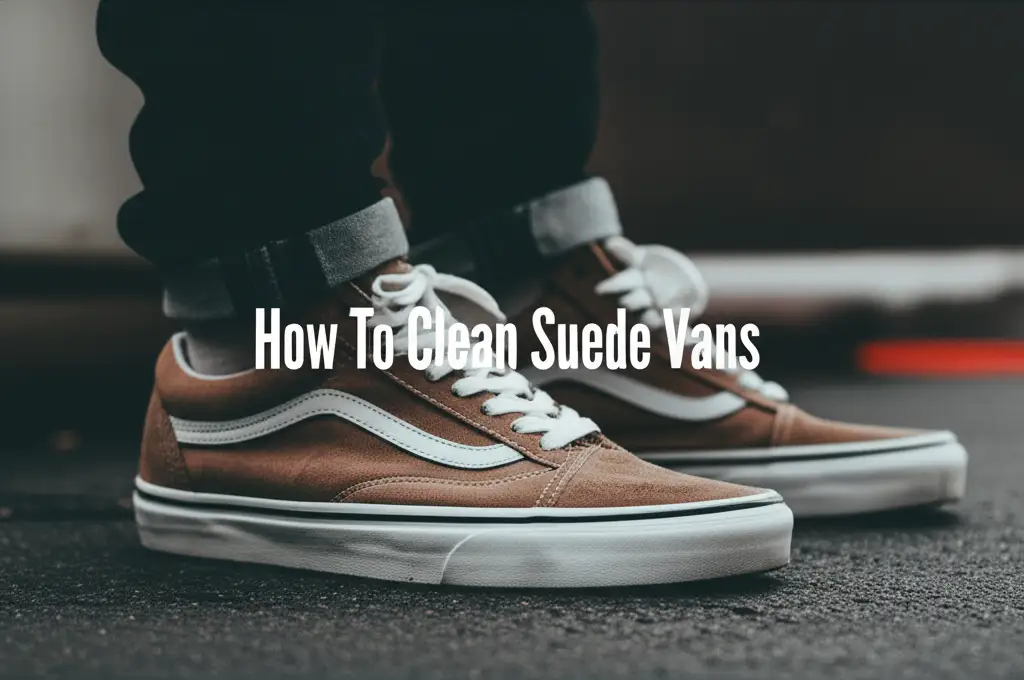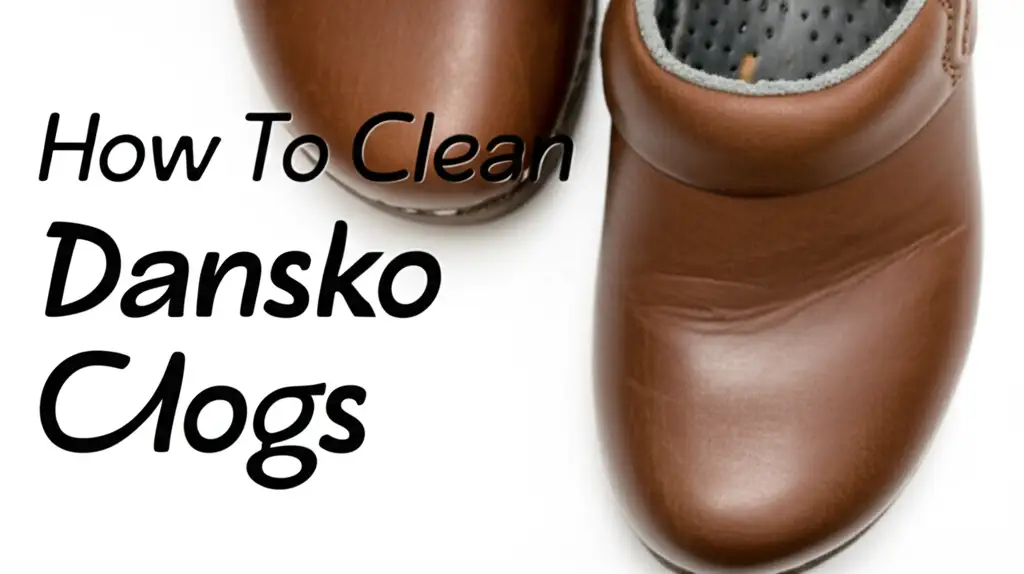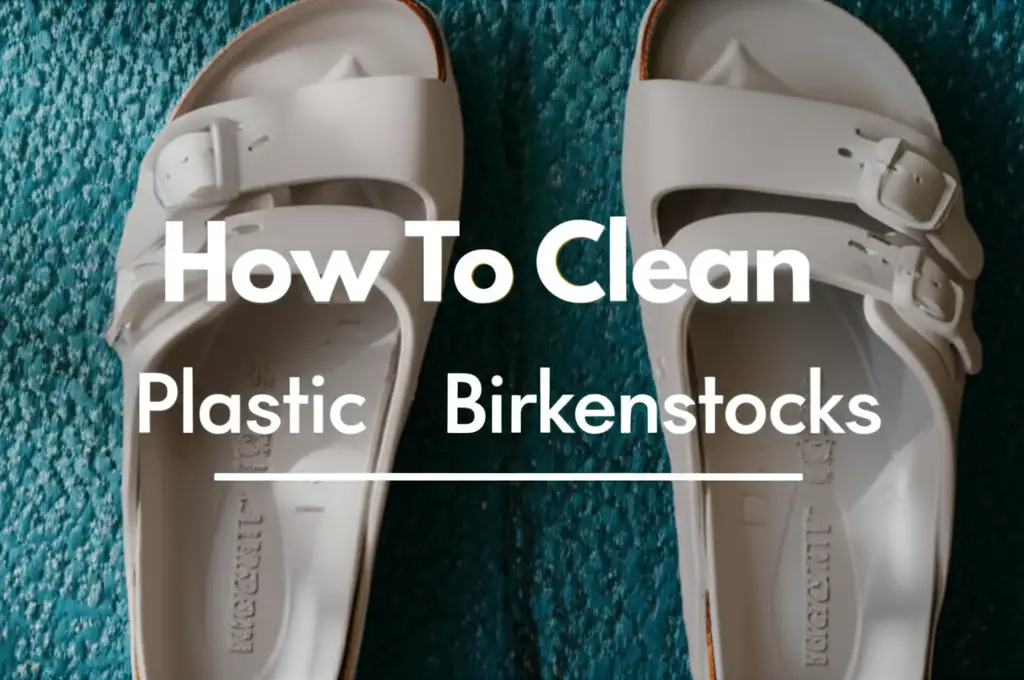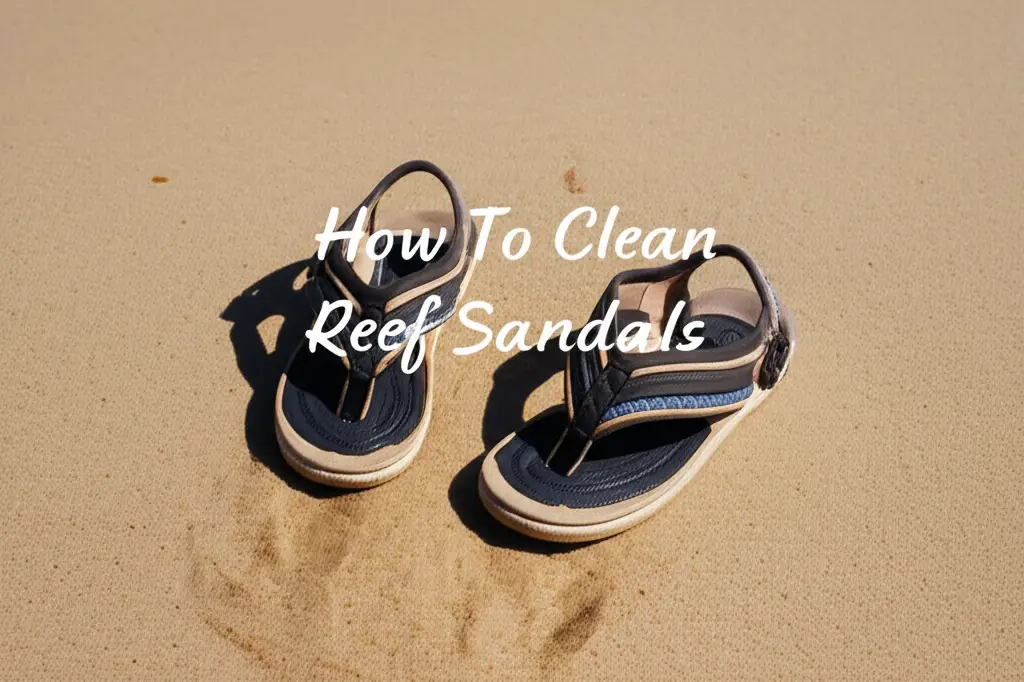· Footwear Care · 17 min read
How To Clean Birkenstock Cork
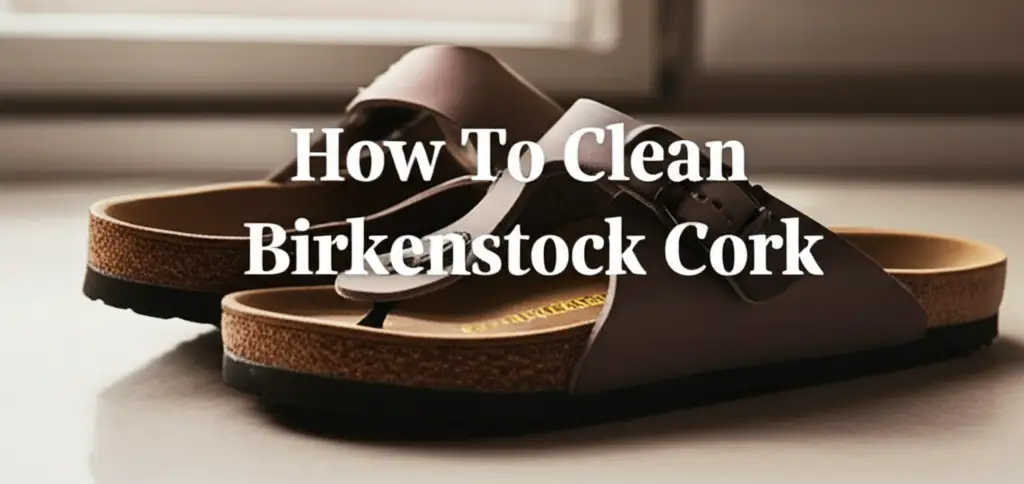
Unlock the Secret to Sparkling Birkenstock Cork
Birkenstock sandals offer great comfort. Their cork footbeds are a key part of this comfort. Over time, dirt, sweat, and grime build up on the cork. This makes your favorite sandals look worn. Cleaning your Birkenstock cork can restore its original appeal. It also extends the life of your footwear. I often hear people worry about damaging the cork. This article will show you how to clean Birkenstock cork safely. We will cover necessary supplies. We will also detail specific cleaning steps. You will learn how to protect your sandals for years. Getting your Birkenstocks looking fresh again is simple. Just follow these steps.
Takeaway
- Gather the right, gentle cleaning supplies.
- Apply mild soap and water carefully to the cork.
- Use a soft brush for gentle scrubbing.
- Allow the cork to air dry completely.
- Apply cork sealant for future protection.
Main Query Answer
To clean Birkenstock cork, gently scrub the affected areas with a soft brush or cloth dipped in a mild soap and water solution. Wipe away dirt and allow the cork to air dry completely. Apply a specialized cork sealant afterward to protect the material from moisture and wear.
Caring for Your Birkenstock Cork: A Foundation of Comfort
Birkenstocks are famous for their unique cork footbeds. This cork material provides excellent arch support. It also molds to your foot’s shape over time. The natural cork consists of granulated cork bark. A latex binder holds these granules together. This blend creates a flexible, durable material. People love the comfort this provides.
However, cork is also porous. This means it absorbs moisture and dirt easily. Sweat from your feet contributes to this. Dust, dirt, and spills also get trapped in the cork. Over time, the cork darkens. It can even develop unpleasant odors. Regular cleaning prevents this build-up. It keeps your Birkenstocks hygienic. It also preserves their comfortable feel. A well-maintained cork footbed remains resilient. It continues to support your feet correctly.
Many users wonder about the best way to clean this specific material. Standard shoe cleaning methods often do not work for cork. Harsh chemicals or excessive water can damage the cork’s structure. This can lead to cracking or crumbling. Proper care involves gentle methods. It respects the delicate nature of the cork. I want my Birkenstocks to last. You should also aim for gentle cleaning. This helps your sandals stay in good shape.
Gathering Your Tools: Essential Supplies for Cork Cleaning
Before you start cleaning your Birkenstock cork, gather your supplies. Having everything ready makes the process smoother. You do not need many items. The right tools ensure a safe and effective clean. Using the wrong products can cause damage. We want to avoid that.
Here is a list of what you will need:
- Soft-bristled brush: A toothbrush works well. A soft nail brush or a dedicated suede brush also works. The bristles must be gentle. Hard bristles can scratch or gouge the cork surface.
- Mild soap: Dish soap or a gentle hand soap is ideal. You can also use specific Birkenstock cleaning products. Avoid harsh detergents or abrasive cleaners. These can strip the natural oils from the cork. They can also break down the cork’s binder.
- Small bowl of water: Use lukewarm water. You will mix the soap here.
- Clean cloths or sponges: Microfiber cloths are excellent. They are soft and absorbent. You will use these to wipe the cork. You will also use them to apply the cleaning solution.
- Birkenstock Cork Sealant (optional but recommended): This product protects the cork. It forms a protective layer. This layer prevents moisture and dirt absorption. It helps the cork last longer. You can often find this where Birkenstocks are sold.
- Rubber gloves (optional): These protect your hands. They are useful if you have sensitive skin.
Gathering these items prevents interruptions. It prepares you for a successful cleaning session. Many common household cleaning products are too strong for cork. For instance, cleaning solutions used for a shower floor are usually too harsh. Stick to gentle soap and water.
The Gentle Touch: Step-by-Step Cork Cleaning
Cleaning your Birkenstock cork requires a gentle approach. Follow these steps carefully to avoid damage. This method helps remove surface dirt and grime effectively. It preserves the cork’s integrity. I have found this method to be very reliable.
Step 1: Prepare Your Birkenstocks
First, remove any loose debris from your sandals. You can use a dry soft brush for this. Brush off any dust or loose dirt. Make sure the cork is dry before starting. Inspect the cork for any deep cracks or damage. Address these issues before cleaning if possible. Cleaning damaged cork can make the problem worse.
Step 2: Create Your Cleaning Solution
Get your small bowl of lukewarm water. Add a few drops of mild soap to the water. Mix it gently until a light suds forms. You want a weak solution. Too much soap can leave residue. This residue can attract more dirt. It can also dry out the cork.
Step 3: Apply and Gently Scrub
Dip your soft-bristled brush or clean cloth into the soapy water. Wring out excess liquid. The brush or cloth should be damp, not soaking wet. Apply the damp brush or cloth to the cork footbed. Gently scrub the soiled areas in small circular motions. Do not press too hard. You are lifting dirt, not sanding the cork. Focus on areas with visible discoloration or dirt build-up. I like to work on one section at a time. This helps me manage the cleaning process better.
Step 4: Wipe Away Dirt
After scrubbing a section, use a separate, clean, damp cloth. Wipe away the lifted dirt and soap residue. Rinse the cloth often. Repeat this process until the cork looks clean. Make sure no soap film remains on the cork. This residue can stiffen the cork once dry. It can also attract new dirt.
Step 5: Air Dry Completely
Place your Birkenstocks in a well-ventilated area. Allow them to air dry completely. Do not put them in direct sunlight. Do not use a hairdryer or other heat sources. Heat can dry out the cork too quickly. This causes cracking. Drying can take several hours. Sometimes it takes up to a day. Ensure the cork is dry to the touch before wearing or storing them. Damp cork is vulnerable to mold and mildew. Proper drying is crucial for cork integrity. You want your cork to look clean and feel good.
Dealing with Tough Spots: Removing Stains from Cork
Sometimes, your Birkenstock cork has more than just surface dirt. Stubborn stains can appear. These stains might come from oils, dyes, or dark liquids. Removing these tough spots needs a slightly different approach. However, continue to use gentle methods. This preserves the cork.
Addressing Dark Spots and Discoloration
Dark spots often result from prolonged sweat and dirt accumulation. They can also come from dye transfer. For these areas, you can try a slightly stronger, but still mild, approach.
- Baking Soda Paste: Mix a small amount of baking soda with water. Create a thick paste. Apply this paste directly to the dark spot. Let it sit for about 10-15 minutes. Baking soda is a mild abrasive and odor absorber. Gently scrub the paste with your soft brush. Wipe it away with a damp cloth. This can help lift the stain. This method is often useful for cleaning stains on wood, which shares some characteristics with cork.
- Rubbing Alcohol (Isopropyl Alcohol): For very stubborn dark spots, dab a small amount of rubbing alcohol onto a cotton swab. Gently blot the stain. Do not rub vigorously. Rubbing alcohol can help dissolve some tough organic stains. Test this in an inconspicuous area first. This prevents potential discoloration. Use sparingly.
Tackling Oil and Grease Stains
Oil and grease can leave dark, slick marks on cork. These need immediate attention.
- Cornstarch or Talcum Powder: Sprinkle a generous amount of cornstarch or talcum powder over the fresh oil stain. These powders absorb oil. Let it sit for several hours, or even overnight. The powder will absorb the grease. Brush away the powder with a soft brush. Repeat if necessary. This method works well because it draws the oil out.
- Mild Degreaser (Very Diluted): As a last resort, use an extremely diluted mild degreaser. Mix a tiny drop with a large amount of water. Apply with a cotton swab to the stain. Blot, do not rub. Wipe immediately with a clean, damp cloth. Always test this in an unseen spot first. This is a powerful step. Be very careful.
Mold and Mildew Removal
Cork can develop mold or mildew in damp environments. This appears as fuzzy spots. These spots are usually black, green, or white. Prompt removal is important for hygiene and cork preservation.
- Vinegar Solution: Mix equal parts white vinegar and water. Dampen a cloth or cotton swab with this solution. Gently wipe the moldy area. Vinegar is a natural anti-fungal agent. It helps kill mold spores. Allow the area to air dry completely. The smell of vinegar will dissipate. This method is effective for cleaning mold with vinegar on various surfaces, including shoe components.
- Birkenstock Cleaner: Some Birkenstock brand cleaners contain anti-fungal properties. Follow product instructions. This is a specialized solution for your shoes. It is very effective. If you have mold off shoes in general, these steps apply to cork too.
Always ensure the cork dries completely after stain removal. This prevents re-growth of mold. It also stops further damage from moisture.
Protecting Your Investment: Sealing and Maintaining Cork
After cleaning, your Birkenstock cork looks fresh. Now, you need to protect it. Cork sealant is crucial for long-term maintenance. It acts as a barrier. This barrier protects the cork from future damage. It also extends the life of your sandals significantly.
The Importance of Cork Sealant
Birkenstock cork sealant is specifically designed for this material. It is a clear, flexible coating. When applied, it penetrates the cork. It then forms a protective layer on the surface. This layer prevents several issues:
- Moisture Absorption: The sealant repels water. This prevents water from soaking into the cork. Moisture causes cork to swell and eventually crack.
- Dirt and Grime Penetration: It makes the cork less porous. Dirt and sweat find it harder to embed deeply into the material. This keeps the cork cleaner for longer.
- Fraying and Cracking: The sealant helps keep the cork pliable. It prevents the cork from drying out. This reduces the risk of the cork flaking or crumbling over time.
- Overall Durability: A sealed cork footbed is more resistant to everyday wear and tear. It helps maintain the cork’s structural integrity. This means your Birkenstocks will last longer.
How to Apply Cork Sealant
Applying cork sealant is a simple process. Do it after the cork is completely clean and dry.
- Ensure Cleanliness: Make sure your cork footbeds are free of all dirt and moisture. Any trapped debris will be sealed in.
- Shake the Sealant: Shake the bottle of Birkenstock cork sealant well. This ensures the product is properly mixed.
- Apply a Thin Layer: Use the brush applicator that comes with the sealant. Apply a thin, even layer directly to the exposed cork. Do not apply too much. A thick layer can look clumpy. It might also crack.
- Cover All Cork: Make sure to cover all cork surfaces. This includes the sides of the footbed. It also includes any exposed cork on the sole.
- Allow to Dry: Let the first coat dry completely. This usually takes about 15-30 minutes. Check the product instructions for exact drying times.
- Apply Second Coat (Optional): Some people prefer to apply a second thin coat for extra protection. Allow it to dry fully before wearing your sandals.
- Regular Application: Apply sealant every few months. This depends on how often you wear your Birkenstocks. Frequent wearers should apply it more often. I usually reapply every 2-3 months. This keeps the cork looking good and protected.
Cork sealant is a small investment. It provides big returns in terms of sandal longevity. It is an essential step in cork maintenance.
Avoid These Pitfalls: Common Cork Cleaning Mistakes
Cleaning Birkenstock cork seems straightforward. However, common mistakes can damage your sandals. Knowing what to avoid is as important as knowing what to do. I have seen many good Birkenstocks ruined by improper care.
Here are the pitfalls to steer clear of:
- Soaking the Cork in Water: Never submerge your Birkenstocks in water. Cork is a natural material. It absorbs water easily. Soaking can cause the cork to swell. It can also weaken the adhesive holding the cork granules together. When the cork dries, it can crack, shrink, or crumble. This damage is often irreversible. This is different from how you might clean other items like a gas can, which often requires rinsing.
- Using Harsh Cleaning Products: Avoid strong detergents, bleach, abrasive cleaners, or chemical solvents. These products are too aggressive for delicate cork. They can strip the natural oils. They can break down the latex binder. This leads to dryness, discoloration, and structural damage. Stick to mild soap and water only.
- Aggressive Scrubbing: Cork is somewhat fragile. Using a stiff brush or scrubbing too hard can abrade the surface. It can remove cork granules. This leaves permanent gouges. Always use a soft-bristled brush. Apply only gentle pressure.
- Drying with Heat: Never use direct heat to dry your Birkenstocks. This includes hairdryers, radiators, or placing them in direct sunlight for extended periods. Rapid drying causes the cork to dry out unevenly. This leads to severe cracking and warping. Always air dry your sandals in a cool, well-ventilated area. Patience is key here.
- Neglecting the Cork Edges: The cork edges around the sole are often forgotten. These areas are prone to impact and scuffs. They also need cleaning and sealing. Neglecting them leaves them vulnerable to damage. Make sure to clean and seal these parts too.
- Ignoring Odors: If your Birkenstock cork develops an odor, address it promptly. Odors often indicate bacterial growth. A simple cleaning may not be enough. Use a mild anti-bacterial spray designed for shoes. Then, ensure thorough drying. Ignoring odors means ignoring potential microbial issues.
- Skipping Cork Sealant: This is a crucial mistake. Without a protective sealant, your cleaned cork remains vulnerable. It will quickly re-absorb dirt and moisture. This undoes all your cleaning efforts. Sealant is the final and protective step.
Avoiding these common mistakes ensures your Birkenstock cork stays healthy. It helps them last for many years of comfortable wear. Proper care keeps your sandals in top condition.
Long-Term Care: Ensuring Birkenstock Cork Longevity
Beyond cleaning and sealing, long-term care practices are essential. These habits help your Birkenstock cork remain in excellent condition. They prevent many common problems. I have found that a little consistent effort goes a long way.
Regular Spot Cleaning
Do not wait for the cork to get heavily soiled. Perform quick spot cleans regularly. If you notice a small spill or dirt mark, address it immediately. Use a damp cloth to wipe it away. This prevents stains from setting in. Regular maintenance reduces the need for deep cleaning. It also preserves the cork’s appearance.
Proper Storage
Store your Birkenstocks correctly when not in use.
- Cool, Dry Place: Store them in a cool, dry area. Avoid damp basements or hot attics. Extreme temperatures and humidity harm cork.
- Away from Direct Sunlight: Store them away from windows or areas with direct sunlight. Sunlight can dry out cork. It can also fade the colors.
- Proper Ventilation: Ensure good air circulation. Do not store them in sealed plastic bags. This traps moisture. It can encourage mold growth. If you store them for extended periods, consider using shoe trees. These help maintain shape.
Rotate Your Footwear
Wearing the same pair of Birkenstocks every single day puts constant stress on the cork. It also exposes them to continuous sweat. This reduces their lifespan. If possible, rotate your footwear. Have at least two pairs of sandals. This allows each pair to air out completely between wears. It gives the cork a chance to dry and recover. This significantly extends the life of each pair.
Mindful Wearing
Be aware of where you wear your Birkenstocks.
- Avoid Wet Conditions: Do not wear them in heavy rain or puddles. Avoid walking through wet grass. Excessive moisture is the biggest enemy of cork.
- Rough Terrain: Try to avoid rough, rocky terrain. Sharp objects can scratch or gouge the cork.
- Chemical Exposure: Keep your sandals away from oils, strong cleaning chemicals, or harsh solvents. These can degrade the cork and its sealant.
Address Wear and Tear Early
Inspect your Birkenstock cork periodically. Look for signs of wear.
- Cracks: Small cracks can be treated with cork sealant. Larger cracks might need professional repair.
- Fraying: If the cork edges start to fray, apply sealant to hold them together.
- Sole Separation: If the cork starts to separate from the sole, a shoe repair specialist might be able to re-glue it.
Early intervention prevents minor issues from becoming major problems. Taking proactive steps ensures your Birkenstock cork provides comfort and style for many years. It is about being a smart owner.
FAQ Section
How often should I clean my Birkenstock cork?
Clean your Birkenstock cork as needed, typically every few weeks or months, depending on wear frequency. Spot clean dirt or spills immediately. Deep clean when the cork shows significant darkening or grime buildup. Regular, gentle maintenance prevents heavy soiling and extends the cork’s life.
Can I use rubbing alcohol to clean Birkenstock cork?
Use rubbing alcohol very sparingly and only for stubborn stains. Apply a small amount on a cotton swab and blot the stain gently. Rubbing alcohol can dry out cork if used excessively. Always test in an inconspicuous area first to check for any adverse reactions or discoloration before full application.
What happens if I get my Birkenstock cork wet?
Getting your Birkenstock cork slightly damp is fine. Soaking the cork in water is very harmful. Excessive water can weaken the cork’s structure and the adhesive binder. It leads to swelling, cracking, or crumbling once dry. Always avoid submersion and allow thorough air drying if they get wet.
Is cork sealant truly necessary for Birkenstocks?
Yes, cork sealant is highly recommended. It creates a protective barrier on the cork. This barrier repels moisture and dirt. It prevents the cork from drying out, cracking, or crumbling. Regular application of sealant significantly extends the lifespan of your Birkenstock footbeds and maintains their appearance.
Can I use regular shoe polish or conditioner on the cork?
No, regular shoe polish or leather conditioner is not suitable for Birkenstock cork. These products are formulated for leather. They can leave residue, alter the cork’s texture, or cause damage. Always use products specifically designed for cork, such as Birkenstock brand cork sealant or cleaner.
How do I remove odors from the cork footbed?
To remove odors, first clean the cork as described. After drying, sprinkle baking soda over the footbeds and let it sit overnight. Baking soda absorbs odors. Brush it off in the morning. You can also use a shoe deodorizer spray. Ensure the cork is always completely dry after wear to prevent odor-causing bacteria.
Conclusion
Cleaning your Birkenstock cork does not have to be difficult. It is a simple task that extends the life of your favorite sandals. You now understand the steps involved. You know the right tools to use. Remember to be gentle with your Birkenstock cork. Always use mild soap. Allow your sandals to air dry completely. The key to lasting comfort lies in consistent, careful attention.
Protect your investment by applying cork sealant regularly. This shields the cork from moisture and dirt. It keeps it flexible and strong. With proper care, your Birkenstocks will continue to provide support and comfort for many years. Embrace these cleaning and maintenance habits. You will enjoy your Birkenstocks for countless adventures to come. Get your Birkenstocks sparkling today!
- Birkenstock cork cleaning
- sandal maintenance
- shoe care tips

